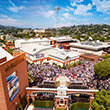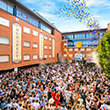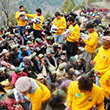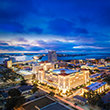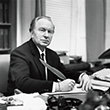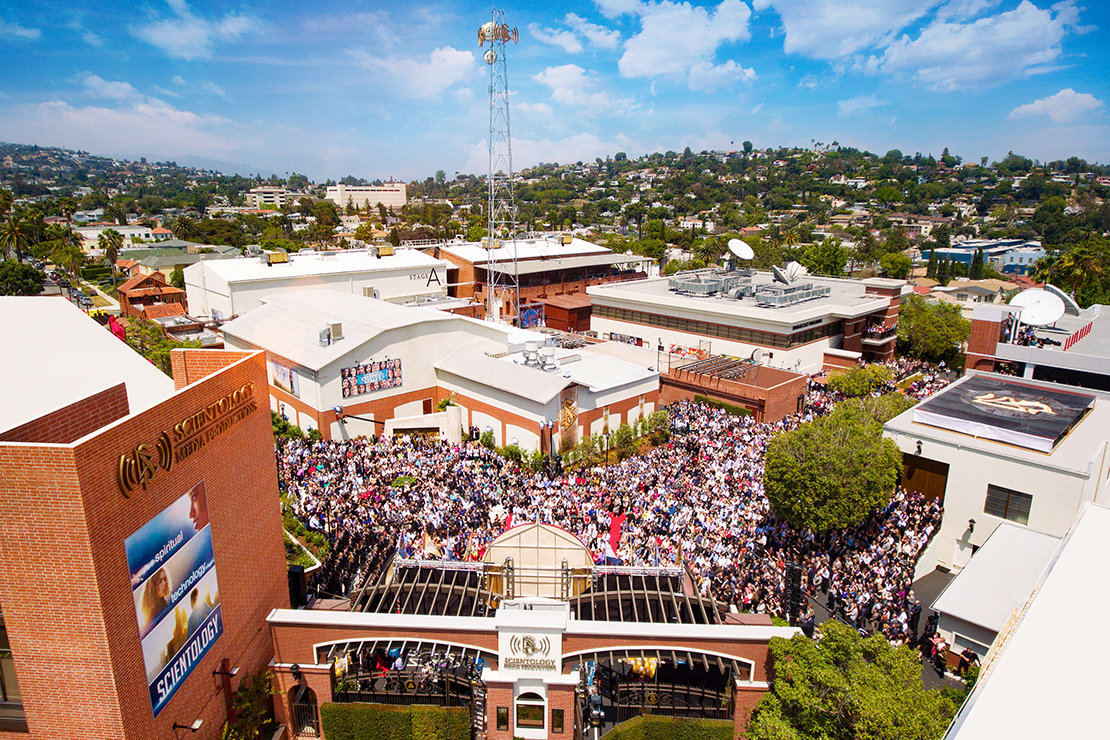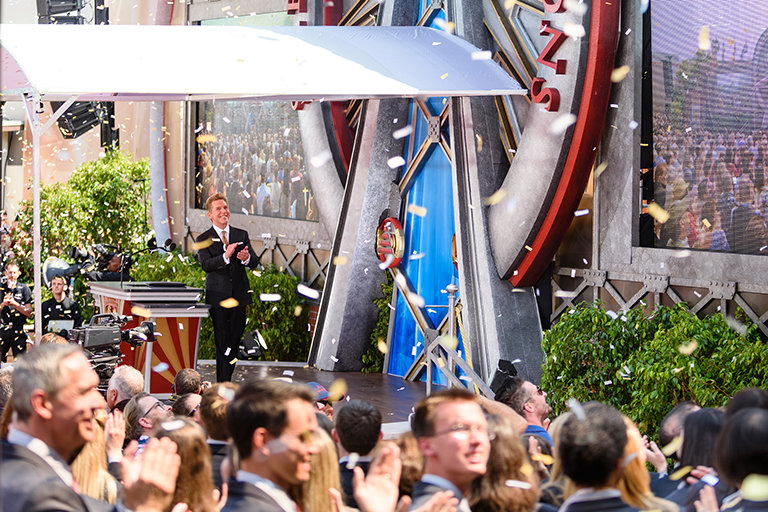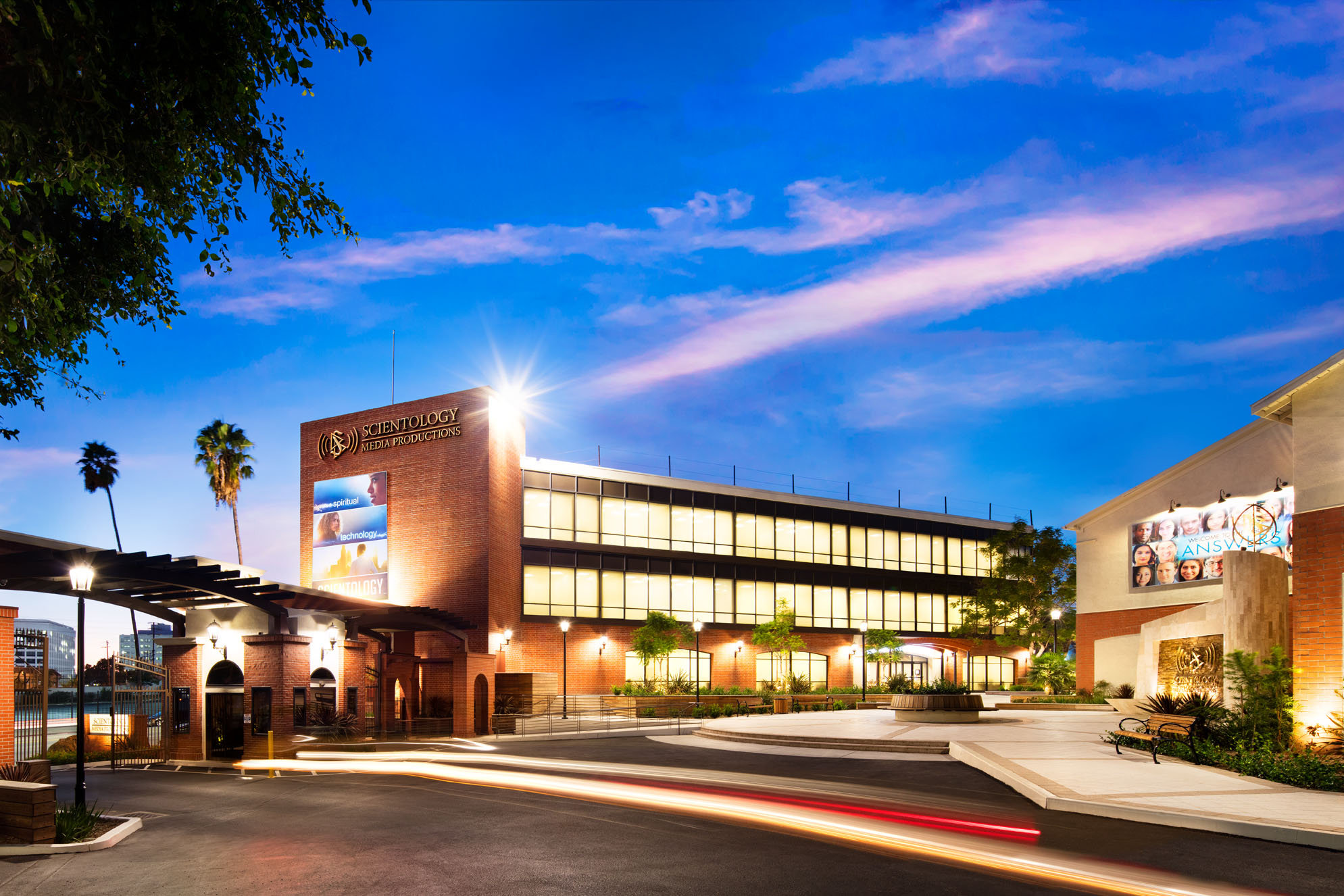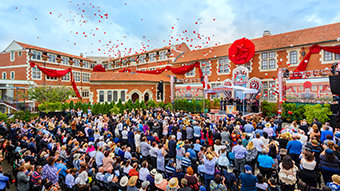Historic studio becomes religion’s media launching pad for the 21st century.
In a sleek maroon-and-gray second-floor conference room at a Hollywood studio, 15 media executives are shooting rapid-fire questions at each other and hammering down a plan for the next week’s work. There’s a series of quick, detailed reports on film shooting in the Philippines, Morocco and Cyprus. Preparations are discussed for upcoming shoots in Sydney and New York City.
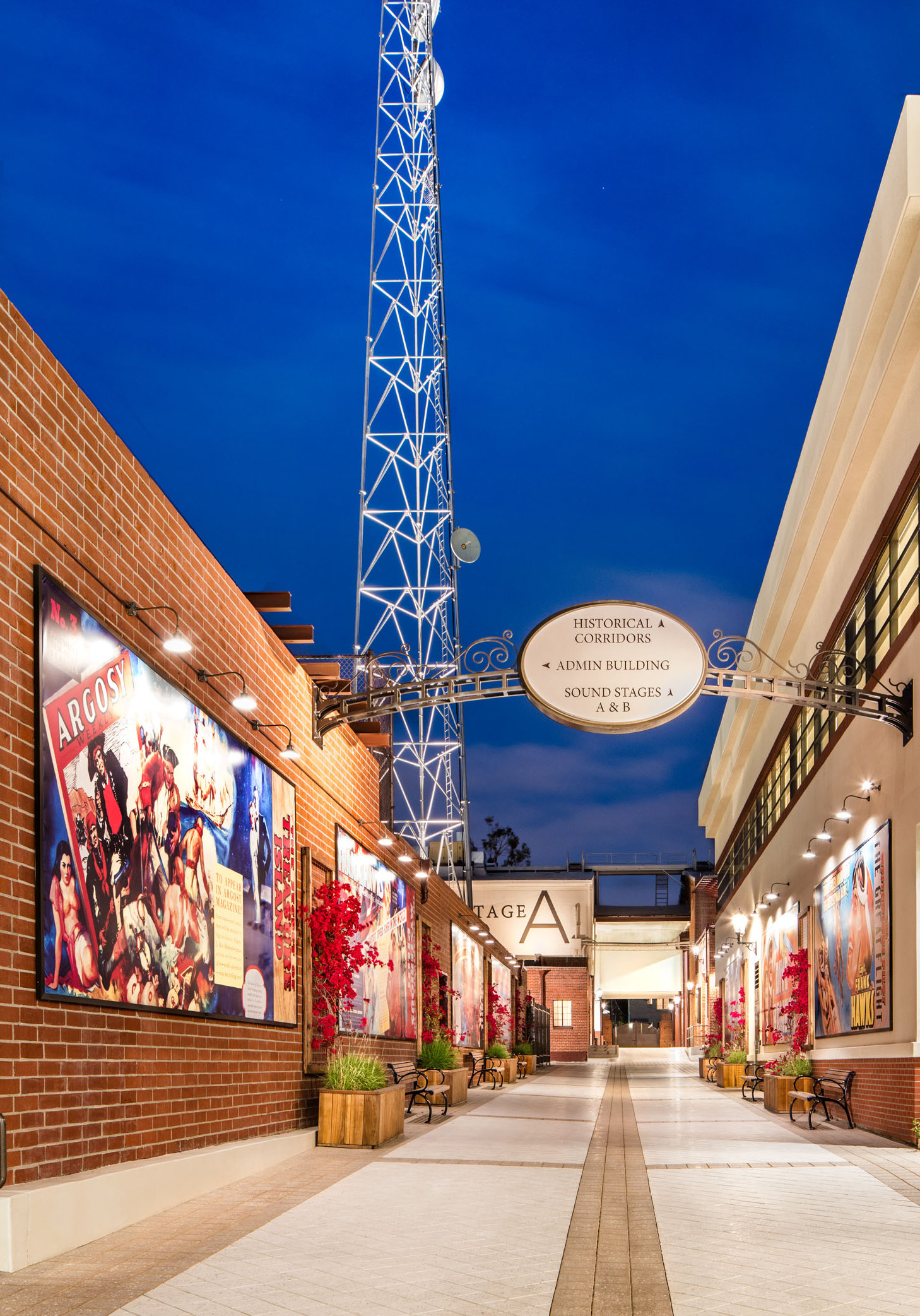
The directors, writers, cinematographers and musicians engage in a time-honored ritual for Hollywood studios—the weekly pulse check on the hundreds of operations that combine into scores of media productions. Out a window of the conference room, the group can get inspiration from one of the most iconic signs in the world: the not-quite-aligned nine letters that boldly spell “HOLLYWOOD” on a shrubby hillside looking over the world’s entertainment heart. Yes, this 1912-vintage studio in Los Angeles’ Tinseltown embraces much more than a century of moviemaking tradition. The studio isn’t about creating entertainment, it’s about uplifting mankind and making a better world—and that’s understatement, not bombast.



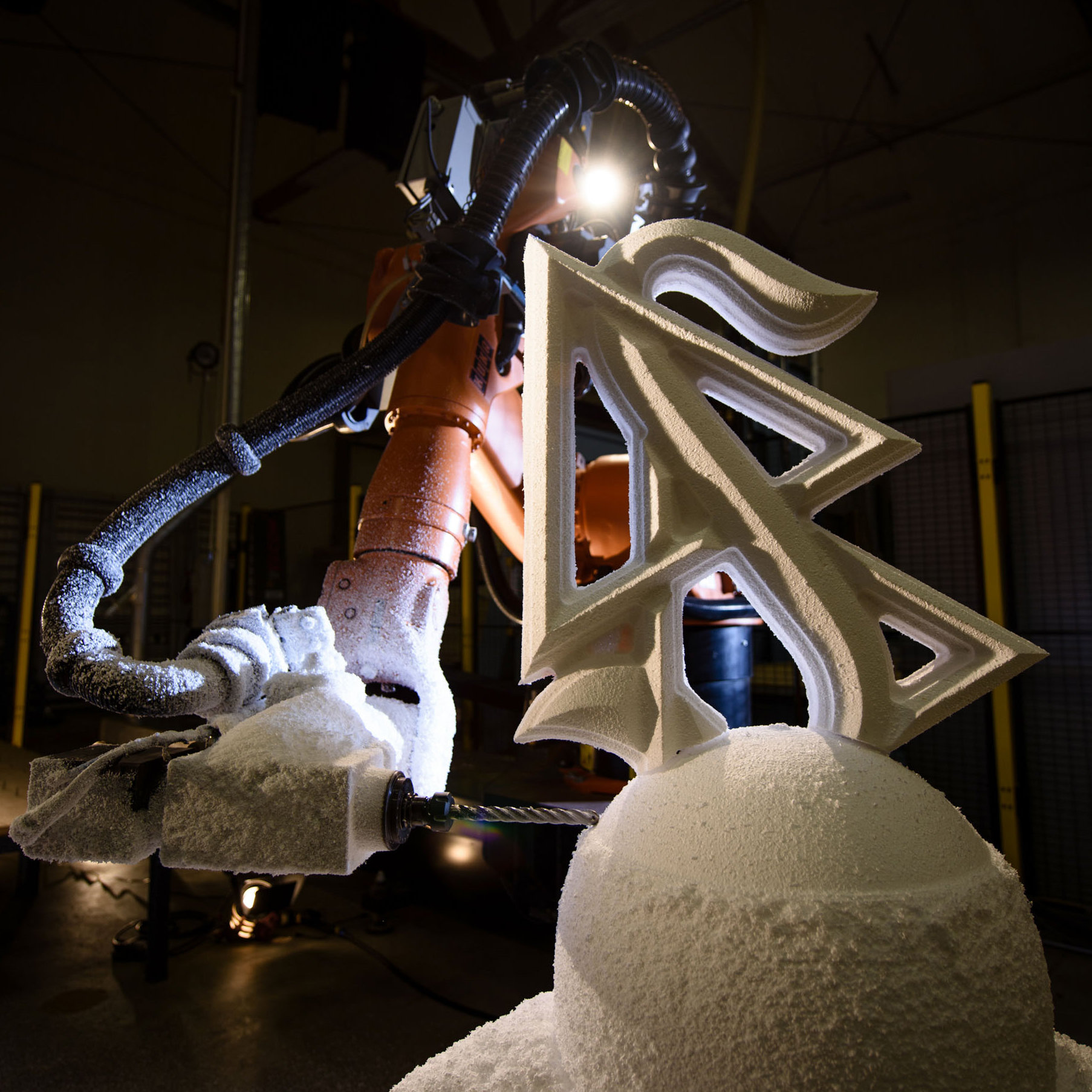
This studio is home to Scientology Media Productions, or SMP, and the superbly crafted videos and music, the spectacular public events, the audience-impacting magazines, and the soon-to-be on-air TV and radio portals have important messages: There’s hope for a troubled world.
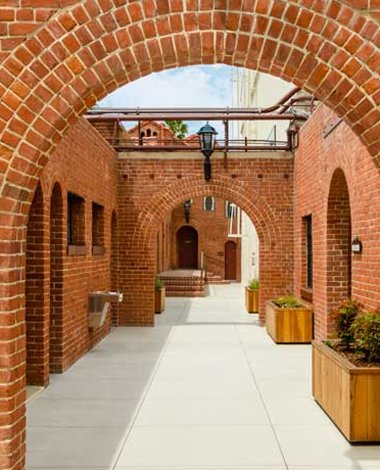
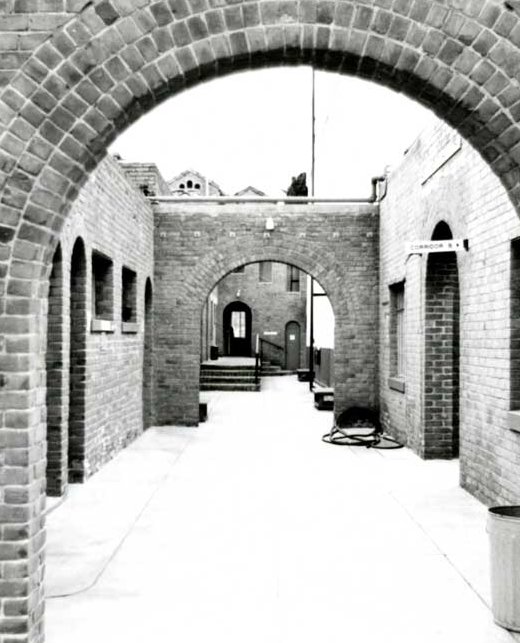
“You want to see what media should be like? Media that serve mankind, improve civilization, find solutions to social rot? This is it,” says Mitch Brisker, senior director who oversees much of the audio-visual production at SMP.
Surrounding the conference room where Brisker and other studio executives meet each Friday is the Broadcast Building, one of the structures at SMP that combine the romantic history of moviemaking with 21st century technology to create a unique—as in, it exists nowhere else—5-acre media powerhouse. At most modern studios nowadays many activities are outsourced to vendors, but at SMP all production and media platforms are embedded in one highly integrated facility. Towering over everything is a 150-foot antenna tower, both a real and a symbolic statement to the planet that SMP is the voice of Scientology.
There are sound stages and editing studios, creative suites, and print and broadcast newsrooms, special effects that materialize from computerized magic and the sawing-and-cranking of set construction. There are ultra-modern offices, and 100-year-old outdoor corridors that have been painstakingly restored.
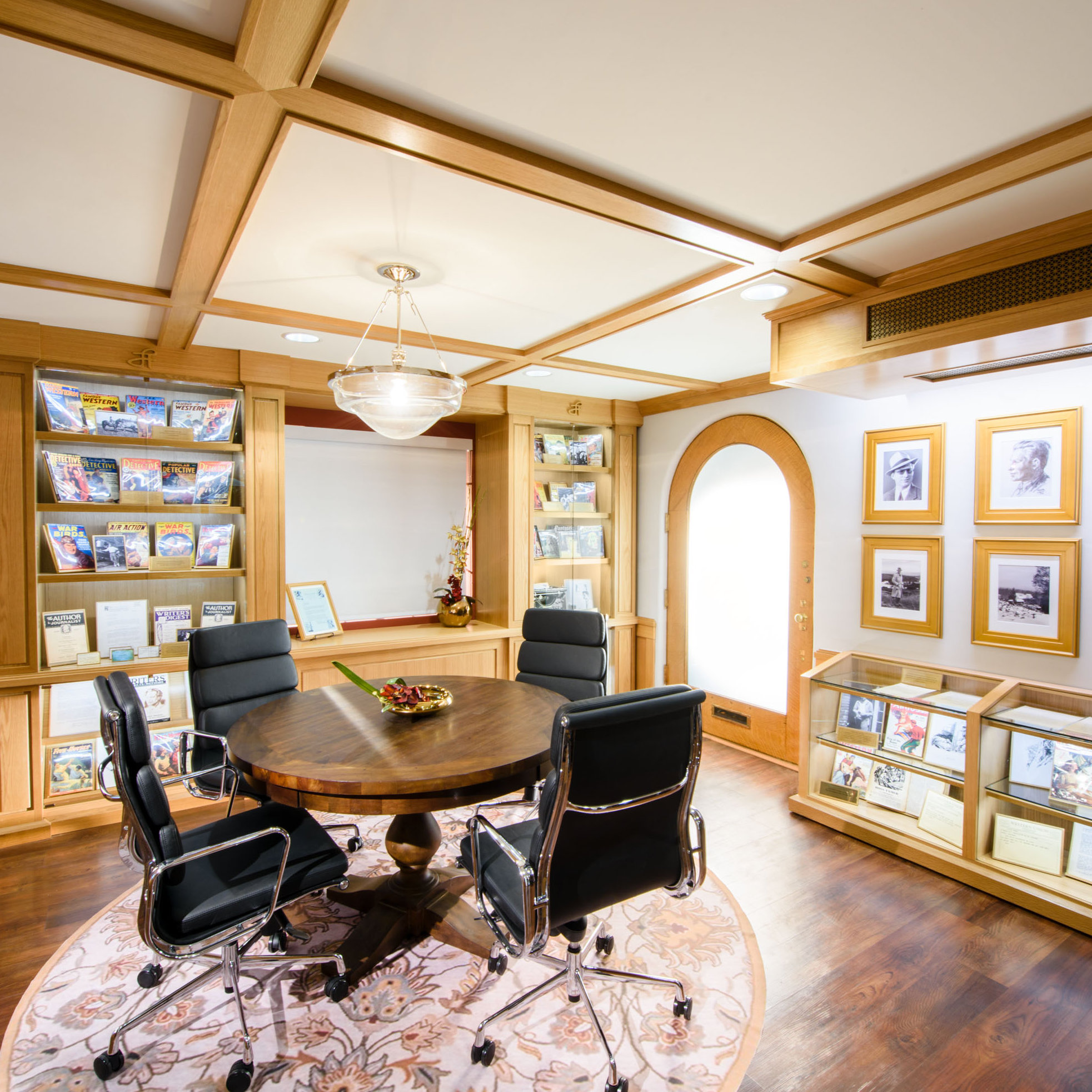
Inside that Broadcast Building conference room stand two large whiteboards, each about 7 feet high and 4 feet wide. The boards are sectioned into broad vertical rows and half-inch horizontal lines. The scores and scores of rectangles that are created list and define “content”—hundreds of videos and all of their attendant parts. They denote two-hour documentaries; journalistic investigations; multi-part series; and on-location news reports from places as far away as New Guinea, Colombia, Switzerland and the tough streets of Compton, California. And so, so much more.
“We like to view projects in their proper scale, and because of the vital humanitarian work we do, we make things BIG,” says Brisker as he waves a hand at the towering boards. “The media in our evolved society are shaped and formed by commercial enterprises. There’s no real journalism outside of what’s permitted by ratings and stockholders. We represent something that is an entirely new shift in the paradigm of the media. We are 100 percent supported by donations from Scientologists, and their purpose is to improve the conditions of the world.
“Our members,” he adds, “believe in restoring kindness to the world. With most media, kindness is not a priority. It is a priority with our mission.”
Also at the meeting is John Sugg, executive editor of the Church’s flagship investigative and news magazine, Freedom. Like Brisker, and many other professionals at SMP, Sugg has had a long career in mainstream media. “I became a journalist because I thought I could change the world, make it better,” Sugg explains. “You take a look at the horrid media today, the disintegration of the best news operations, and there’s not much to feel good about. Freedom gave me a chance to make a positive difference in society. Can we change the world? You bet.”
“WRITING OUR OWN STORY”
On May 28, 2016, more than 10,000 Scientologists and friends packed every plaza, parking lot and garage floor, slice of sidewalk, patio and any other horizontal space on the Scientology Media Productions lot for the colorful and boisterous gaiety of its grand opening. With a sense of wonder hinting that history was unfolding, many in the crowd expressed awe. Peter Kokolus, for example, trekked from his home in Kosice, Slovakia, to witness the SMP opening. “We will talk about it to our children and their children,” he said. “It’s amazing.”
Much of the world hasn’t heard the religion’s own, true story—yet. That began changing at the May event. “As the saying goes, if you don’t write your own story, someone else will,” said David Miscavige, Scientology ecclesiastical leader. “So we’re now going to be writing our own story—like no other religion in history.”
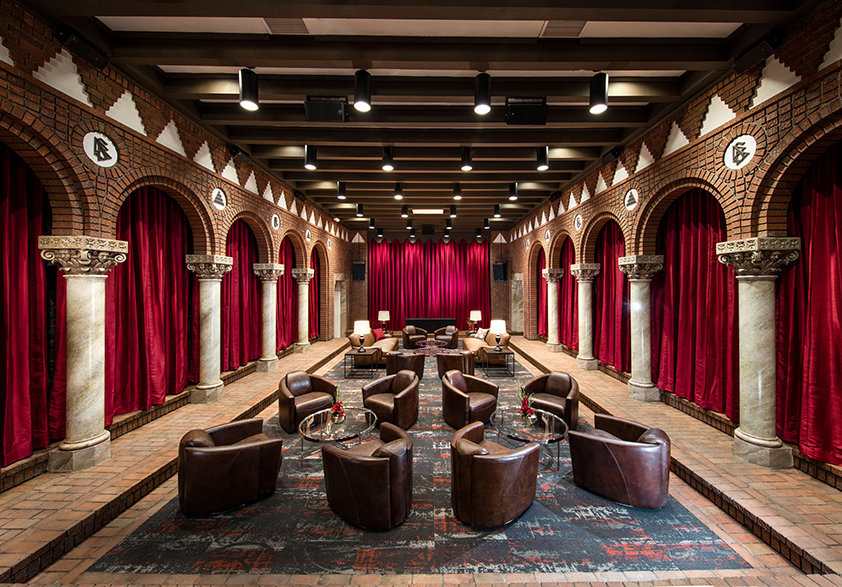
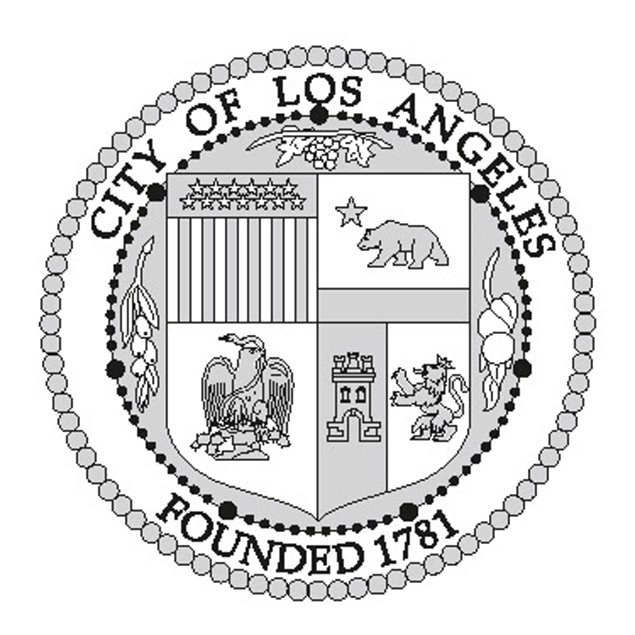
From its earliest days, the mission of Scientology has been raising humanity to ever-greater heights—and a key method to getting that done is via the religion’s own media. Scientology Founder L. Ron Hubbard was an author, photographer, scriptwriter and filmmaker, and that media background is infused into Scientology’s rapid, worldwide expansion. The Church has long had its own film studio, Golden Era Productions, near Los Angeles, as well as printing and distribution facilities in the city and in Europe.
Now, Scientology Media Productions distills the mass communications energy of tomorrow into a single enterprise whose outreach is via magazines, TV, radio, special events, the World Wide Web and more. It gives the religion capabilities to deliver its message in ways that were never possible before. The new global media center is also the icing on the cake of Church expansion in recent years.
Scientology has faced the same opportunities and challenges as many institutions in the Digital Age: If homes are filled with big screens, smaller computers and tablets, virtual reality and augmented reality devices, and citizens’ pockets and purses are packed with smartphones, how does an organization “speak to” the growing wired, digital-always-connected audience to attain visibility and reach across all available communications channels? If you’re the Church of Scientology, you invoke the pioneering spirit that has always been intrepid and resolute, and you become a global digital broadcaster.
SMP’s arsenal of online media will include live productions and video-on-demand broadcasting; “over the top” streaming to computers, tablets, TVs, Internet TV boxes and automobile internet-enabled devices; broadcasting and Internet radio and podcasts; websites; social media; and creation of apps that funnel all of the above to users.
This is the reason SMP was wired from the ground up to meet today’s, and tomorrow’s, definition of a global “digital broadcast facility.”
The Scientology Network will always be on. Projections are that the network will reach 20 million homes, generate millions of streaming views, content impressions and be state-of-the-art able to reach any connected device, 24/7, anywhere in the world and in multiple languages.
SMP is the latest in several decades of unprecedented growth for the religion.
Scientology ushered in its Golden Age of Knowledge and Golden Age of Technology—watershed events that accomplished the recovery and restoration of the full religious teachings and services of the religion, and made them available for delivery in exactly the way L. Ron Hubbard intended.
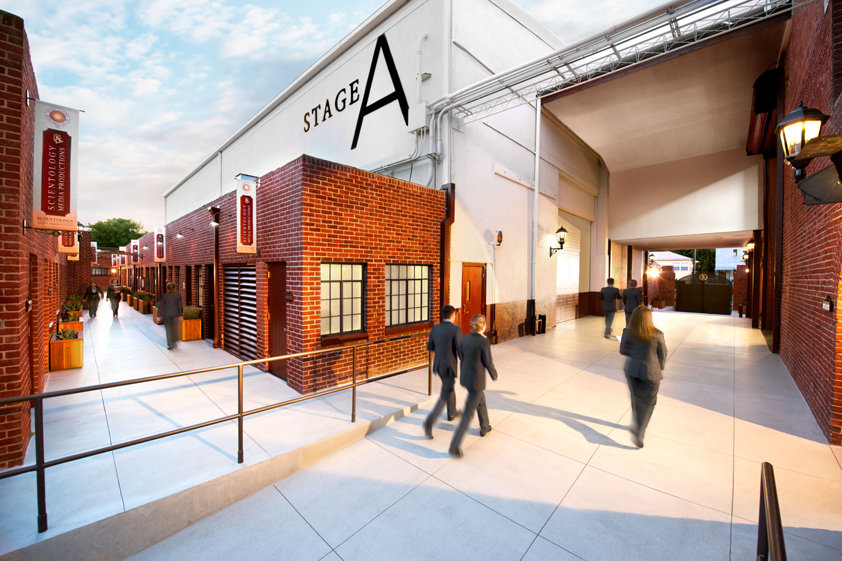
In 2009, the Church established the world’s first all-digital publishing facility, Bridge Publications in Los Angeles, to produce and distribute Mr. Hubbard’s written and recorded Dianetics and Scientology materials—on demand, in any language and quantity, anywhere on Earth. And then to deliver the materials of the religion’s humanitarian and social betterment pro-grams to a global audience, the Church of Scientology International Dissemination and Distribution Center, another one-of-a-kind opera-tion, came online in 2010.
Meanwhile, the religion has opened 55 new Scientology Churches on six continents since 2003; and a grand cathedral, known as the Flag Building, swung wide its doors in November 2013 at the Scientology spiritual headquarters in Clearwater, Florida.
Now, with SMP in place, the Church is poised to reach everyone, everywhere, over the airwaves, the Internet and via publications. It’s the culmination of a strategic expansion plan rooted in the core purpose of Scientology, which Mr. Miscavige stated as, “to share what wisdom we possess, to help others to help themselves.
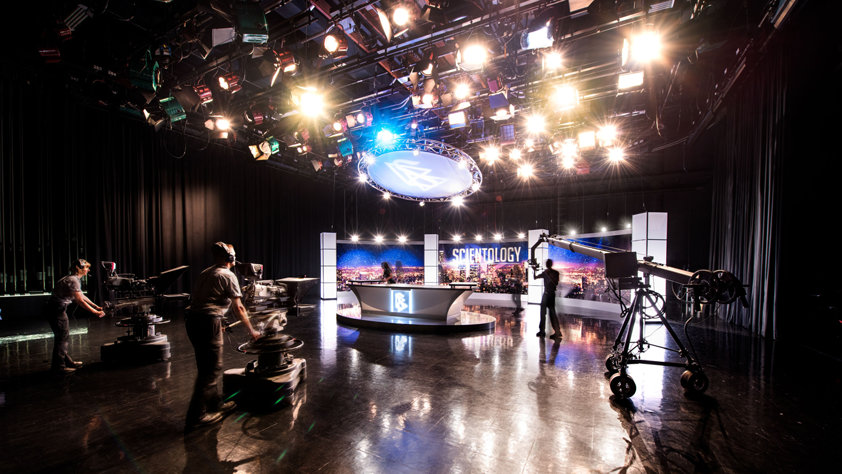
“Shortly after the turn of this decade, and with everything now in place for broadscale delivery, the next inevitable step was global communications,” Mr. Miscavige explained. “Why not our own dedicated television network?”
Why not, indeed?
The Church began hunting for a project to build out entirely new media and communications facilities—an enormous task that would take years. Mr. Miscavige recalled his inevitable question: “Instead of a decade of construction, could it be that, in all of Hollywood, there might possibly be a studio that is already available? True story—the next day the answer comes in.”
The Church learned that the Los Angeles PBS affiliate, KCET, was selling its property, which happened to be the oldest, continuously running studio in Hollywood—a landmark.
“Well, don’t wonder whether I rushed to the lot and met with the General Manager,” said Mr. Miscavige. “The public broadcasting station had done their work to maintain this historic property and didn’t want to see it razed by local developers. They knew we would do it justice.”
Only after the purchase was underway did the Church discover that the studio, located at 4401 West Sunset Boulevard, is the very place from which Mr. Hubbard launched his screenwriting career in the 1930s, authoring scripts for the Columbia Pictures 15-episode movie serial The Secret of Treasure Island.
It was fate.
ONE-OF-A-KIND GLOBAL MEDIA CENTER
After KCET relocated to Burbank in 2012, the Church began a painstaking restoration of a Hollywood icon that would give it new life as a next-generation global media center.
In addition to satellite uplink for radio and high-definition video, SMP has three sound stages, as well as facilities for all aspects of pre- and post-production—including set design and construction, editing, visual effects, scoring, recording and mixing, and foreign language translation—all on one lot. It further houses Church departments for promotion, Internet and social media, magazine editorial and graphic design, and Church events.
Connecting it all is a massive, sophisticated digital storage system composed of hundreds of powerful media processors synchronized into one supercomputer. This is networked to every workstation on the lot, eliminating workflow boundaries and enabling the strategic alignment of content and programming across a variety of media formats and channels.
Chan Mahon is executive vice president of broadcasting systems for Integrated Media Technologies, Inc. (IMT), a leading digital media consulting and engineering firm whose clients include Fox and Warner Bros. He also consulted on the SMP project and describes it as “a once-in-a-lifetime experience. There might be two other projects in the world of this magnitude,” he says.
SMP is engineered for the future. Most broadcast facilities started many decades ago when technology was very different. Every year these operations changed the technology enough to get through the next year. SMP is different. From the very beginning, the Church reimagined what the studio for the future would look like and built the perfect media facility for creation and distribution of content.
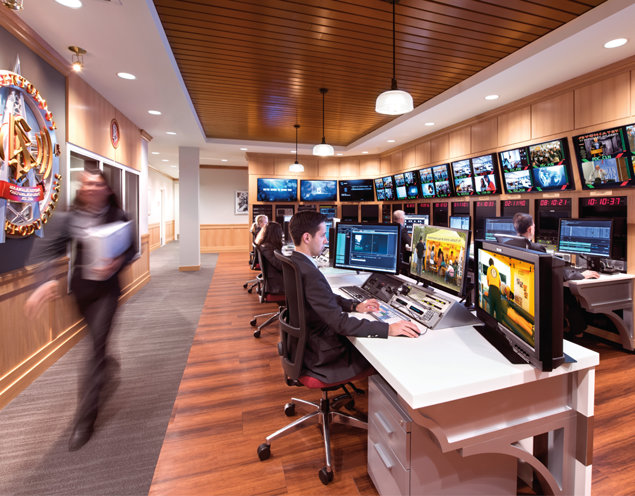
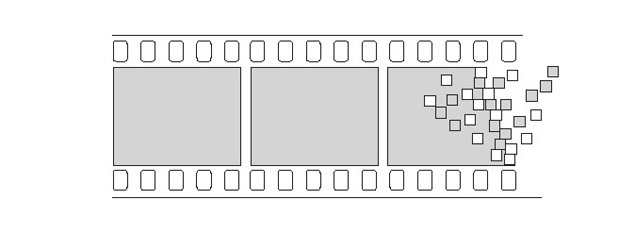
The Church was equally committed to preserving the historic studio’s connection to the past, carrying out 400,000 man-hours of restoration work to preserve the property’s Golden Age of Hollywood soul. Nowhere is that painstaking effort more evident than in the Little Theater that adjoins SMP’s Studio B. Originally constructed as a screening room, the regal high-ceilinged chamber is the historical gem of the lot, its antique moldings and intricately carved Roman Tuscan columns unearthed from behind a drab tomb of drywall.
Irwin Miller, the lead designer for the SMP project at the design firm Gensler, says, “It was really wonderful the level of experts that were brought into this project [for] historic preservation. There are levels of detail that are just not seen on other projects.”
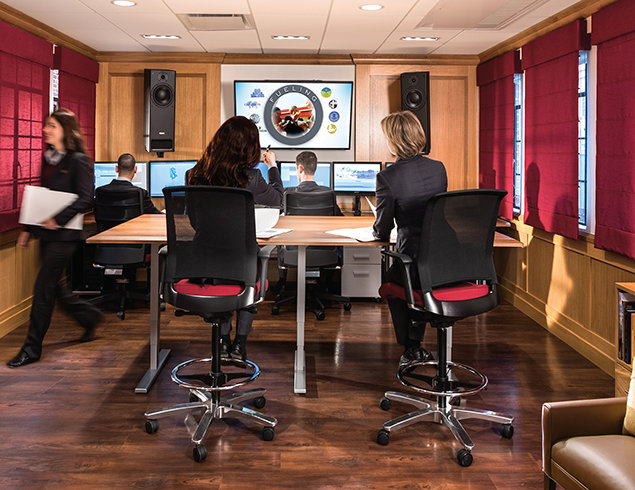
Bridging as it does the storied history of cinema and the still-unfolding saga of digital multimedia, SMP is a facility both impressive and unique.
“There’s nothing like it,” says John Maatta, a veteran entertainment/media attorney and a former studio executive who consulted with the Church on production and distribution planning for the soon-to-be-launched Scientology Broadcast Network. “The equipment, the attention to detail, the lore—it’s an extraordinary studio and [the Church] has brought it into the current age.”
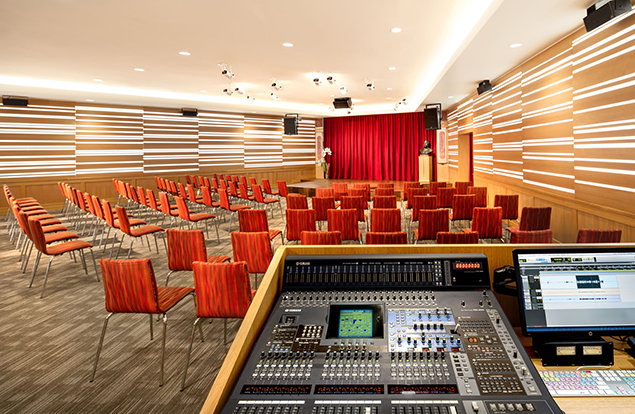
And the Church isn’t going to stop there.
The world “population now tops 7 billion and grows by more than 200,000 per day,” Mr. Miscavige observes. “Now, add to that the 3,000 opportunities to communicate to anyone on any given day while further realizing those messages are routinely stuffed with false help, misinformation and flat-out lies.”
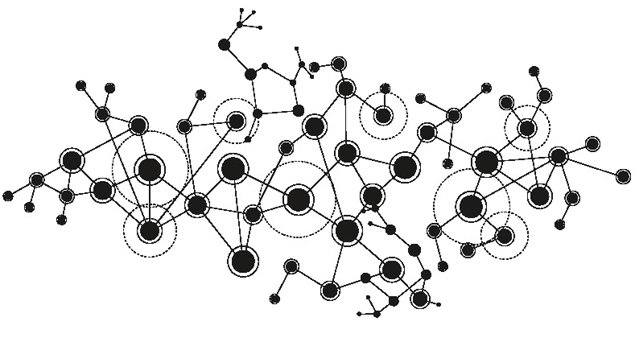
When the Church flips the switch on SMP’s radio and television broadcast operation, the content will include a range of programs to provide an inside look at Scientology as a global movement, and explain and examine Scientology spiritual technology as well as the Church’s many practical tools used by people of all denominations.
Other content will focus on the works of Church-sponsored humanitarian campaigns, along with news, human interest programs and documentaries covering important social issues. The programming will feature how Scientologists, interfaith groups and like-minded community and nonprofit organizations are helping to build a better world.
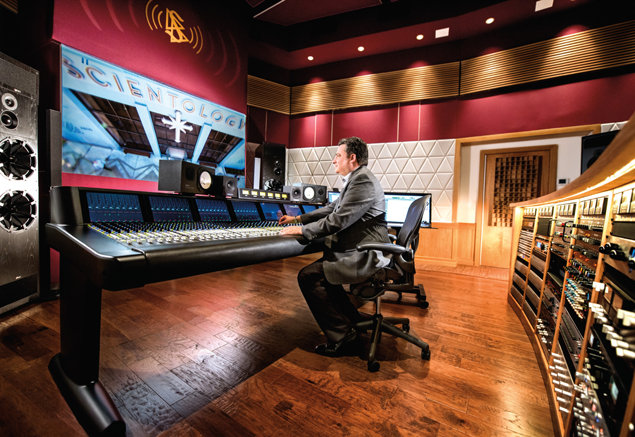
The facility’s technical crew is made up of Church staff members who either came with a film or broadcast industry skill set, or were trained and apprenticed in some facet of audiovisual production during their staff tenure. The Church staff is complemented by a team of outside media professionals, with specialties in magazine design, editorial, digital publishing, social and broadcast media. This includes the staff of Freedom magazine, which is now headquartered at SMP.
Scientology Media Productions also has plans to produce content of general interest to all audiences that are in line with issues close to the heart of the Church: human rights, civil liberties, religious freedom, media, education, abuses in psychiatry, and declining morals and standards in society. Coverage will be focused not only on exposing problems, but also on advocating solutions.
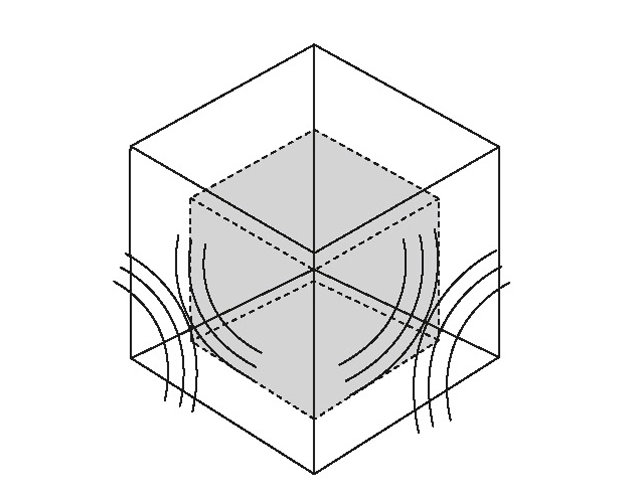
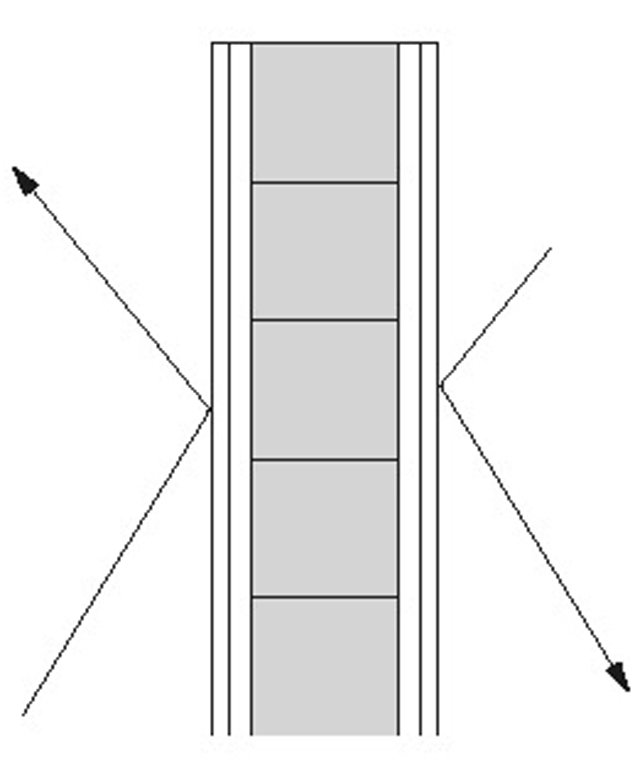
Maatta, who has worked more than 30 years in Hollywood, says: “With SMP, [the Church] will be able to tell stories and convey information in a way that will create emotional connection and that translates into change in society.”
SMP will open its production facilities to religions of every denomination, as well as to charities and community and humanitarian organizations, so that they too can more broadly and effectively do the work that builds communities, supports arts and culture, and eliminates the scourges of drugs and crime.
Arturo Sandoval, a captain of the Los Angeles Police Department assigned to the Northeast Division, plans to take advantage. “We have a great partnership with the Church of Scientology already. [SMP] is just going to take it to another level because it’s going to allow us to do things to reach the community and get messages out. So we are very excited about that.”
Kevin James, the chief film liaison for the City of Los Angeles, also applauds SMP for its planned community offerings: “The more studio space that’s available, the better the opportunity it is to be able to get the work that is needed done, related to volunteerism, humanitarian work and civic engagement.”
Michael Levin, a Los Angeles television producer who works with nonprofits and in fundraising, is similarly stoked. “In a day where big corporations own TV studios and they just push products, it’s nice to know that [the Church] has given some soul and wants it to work. The better you can tell your story, and the better you can distribute that story, the greater the ability you have to touch someone with that story.”
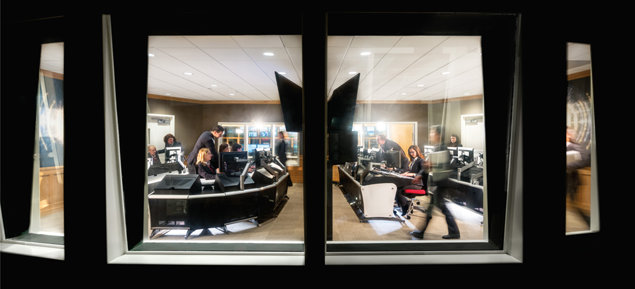
DETAIL AND PRECISION
How do you tell your story? At SMP, the ingredients are careful steps, dedication, attention to detail and massive amounts of creativity.
For example, Cary Butler, the senior sound mixer for SMP, notes that one entire building on the property was built around the main mixing room, and most of the soundboards and other technology were handcrafted by Scientology staff experts. Pointing to a spot in the middle of the roughly 40-foot by 40-foot room, Butler says, “This is the sweet spot.” For the listener at that spot, sound is as tactile as it is aural.
Beginning about two years ago, the first teams of professionals began setting up shop at SMP, many moving from other Scientology facilities. The scores of video and camera crews began deploying around the globe—at any one time, 10 or more teams are producing stories in faraway lands, or as close as neighborhoods in the United States. All of that material is fed into the massive computers at SMP, cataloged in a department called Ingest, then repurposed for a variety of media activities.

On July 31, for example, Scientology opened a new Church and Community Center in Harlem, New York City. Trucks arrived the day before, their cargo being Hollywood-on-wheels.
Within hours of arrival, and after carefully mapping the coverage area and agreeing upon placement, the director, producers, camera operators, lighting and audio specialists, and technicians of multiple disciplines had transformed the space into an outdoor theater. Platforms where cameras would nest were erected as miles of cable were laid. Light stanchions were built on the perimeter as the stage was constructed. A boom with a sophisticated robotic camera would yield the soaring aerial shots that provide such clear perspective.
Once the stationary cameras were in place, the portable Steadicam operators picked their “home base” and best sight lines to which they could move rapidly depending on the action on and near the stage.
It was a veritable ballet, choreographed by a seasoned live remote director.
Hours of preparation paid off and the crew performed their tasks such that after the editing magic of post-production, the world would be able to see and hear exactly what happened in Harlem.
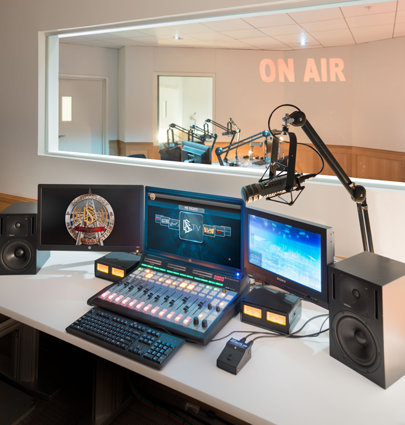
To the assembled masses, it was a spectacular new Church that serves a unique and vital role. But to the SMP crew who worked so long and hard to make the opening event appear effortless, the task was not finished. The now documented event would be edited for export to various media around the world from SMP headquarters.
That same day, the news of the event, along with a photographic tour of the new Church, was posted online, hosted by computers at SMP. The Harlem opening was piped to Scientology Churches across the planet, used as backdrops for other feature presentations and presented in Church publications. Freedom magazine, which has photographers embedded with the video crews, selected photos from the event—and, of course, its reporters were also there.
So, how does Scientology Media Productions tell its stories? With precision—so all the world can get the message.




